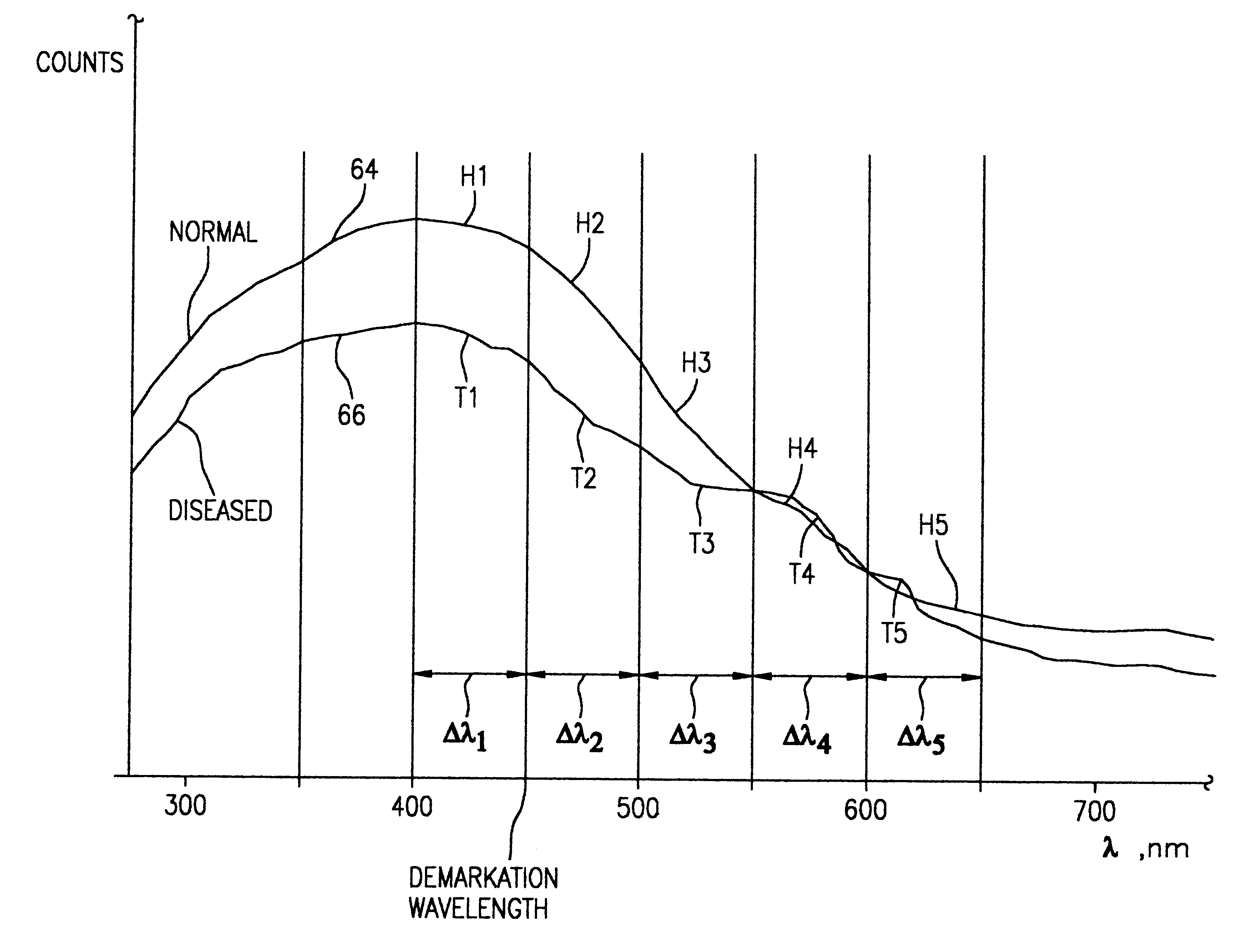Optical instrument and technique for cancer diagnosis using in-vivo fluorescence emission of test tissue
a cancer diagnosis and fluorescence emission technology, applied in the field of detection of cancer, can solve the problems of still being difficult to identify cancerous tissue by direct in-vivo examination, and requiring sophisticated and expensive instruments capable of detection
- Summary
- Abstract
- Description
- Claims
- Application Information
AI Technical Summary
Benefits of technology
Problems solved by technology
Method used
Image
Examples
Embodiment Construction
The heart of this invention lies in the recognition that by monitoring wider fluorescent-emission bandwidths than previously done more information is collected at each intensity measurement regarding differences between the emission spectra of cancerous and benign cells. In addition, stronger signals are generated that make it possible to implement the diagnostic technique of the invention with simpler and less expensive technology that can be incorporated in a self-contained, manually-operated device. Finally, this invention discloses a more versatile and discriminating approach for distinguishing the fluorescent emissions of cancerous cells from that of benign tumors and healthy tissue.
Referring to the drawings, wherein like reference numerals and symbols are used to identify like parts, FIG. 1 illustrates in schematic form a detection instrument 10 according to one embodiment of the invention. The drawing shows the functional components of the instrument 10 as they would appear i...
PUM
 Login to View More
Login to View More Abstract
Description
Claims
Application Information
 Login to View More
Login to View More - R&D
- Intellectual Property
- Life Sciences
- Materials
- Tech Scout
- Unparalleled Data Quality
- Higher Quality Content
- 60% Fewer Hallucinations
Browse by: Latest US Patents, China's latest patents, Technical Efficacy Thesaurus, Application Domain, Technology Topic, Popular Technical Reports.
© 2025 PatSnap. All rights reserved.Legal|Privacy policy|Modern Slavery Act Transparency Statement|Sitemap|About US| Contact US: help@patsnap.com



